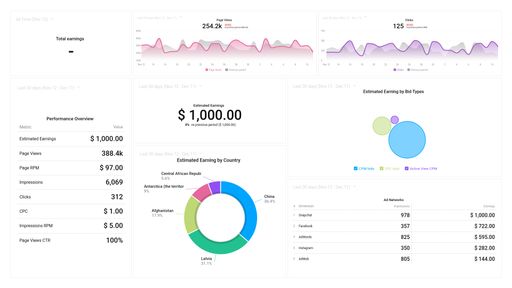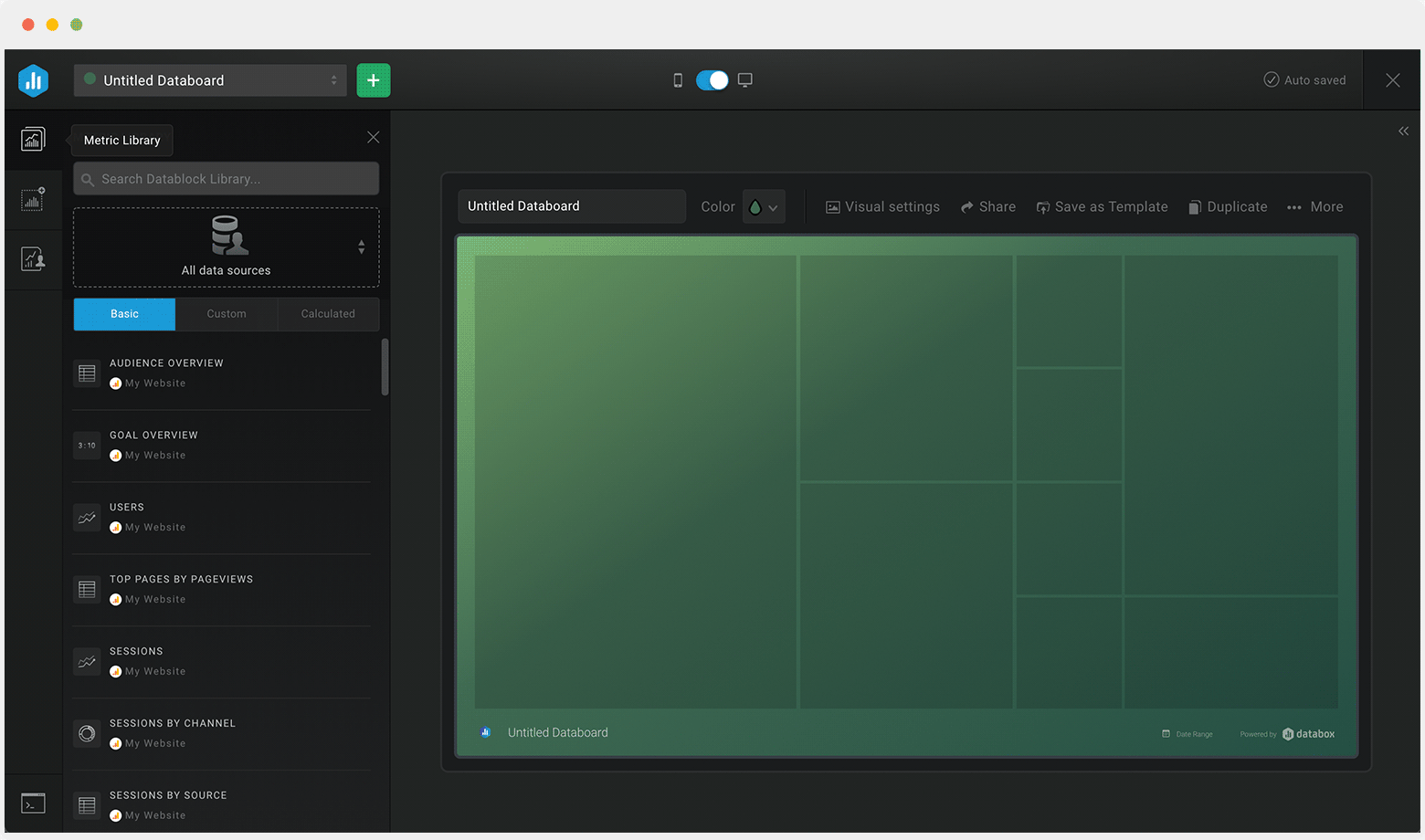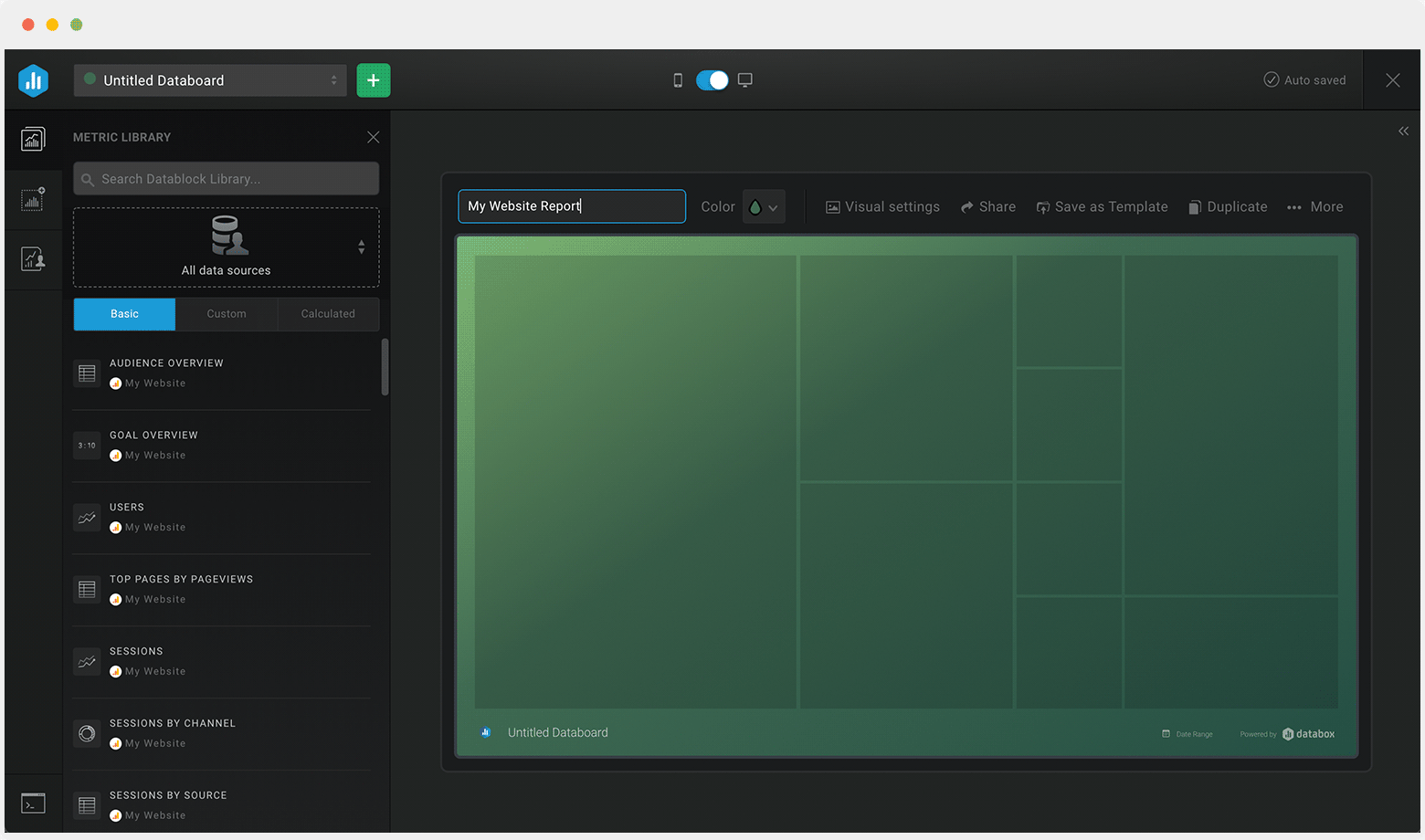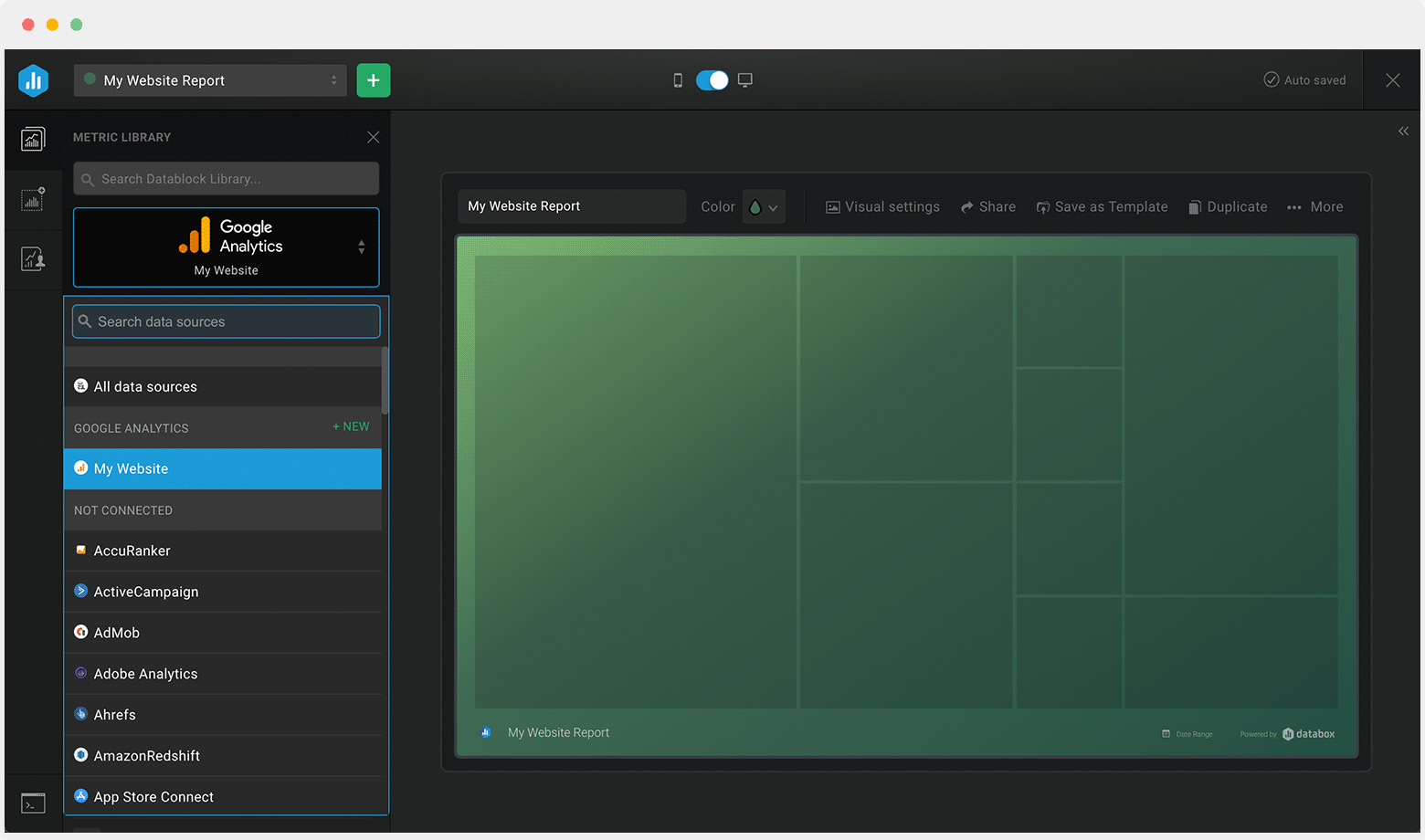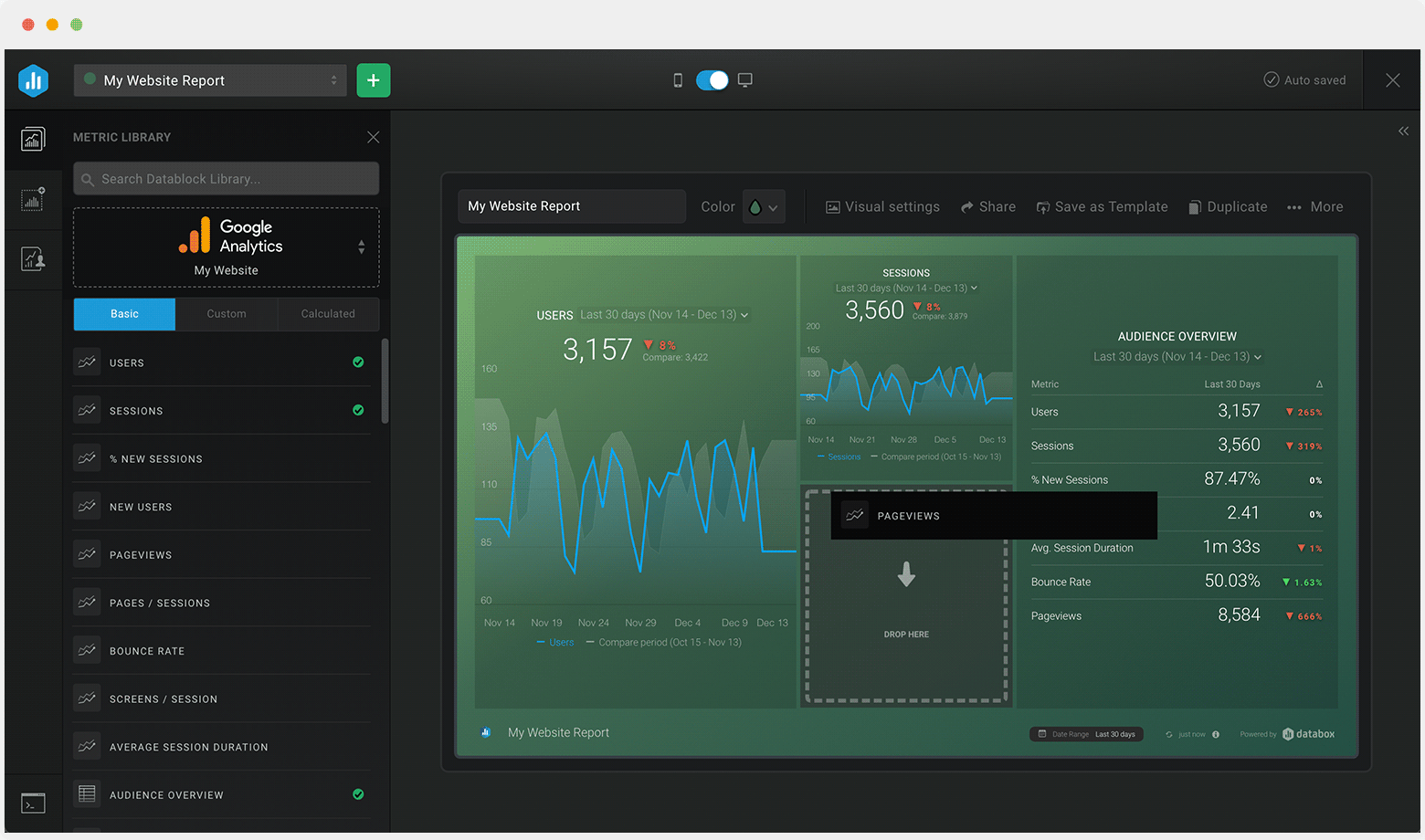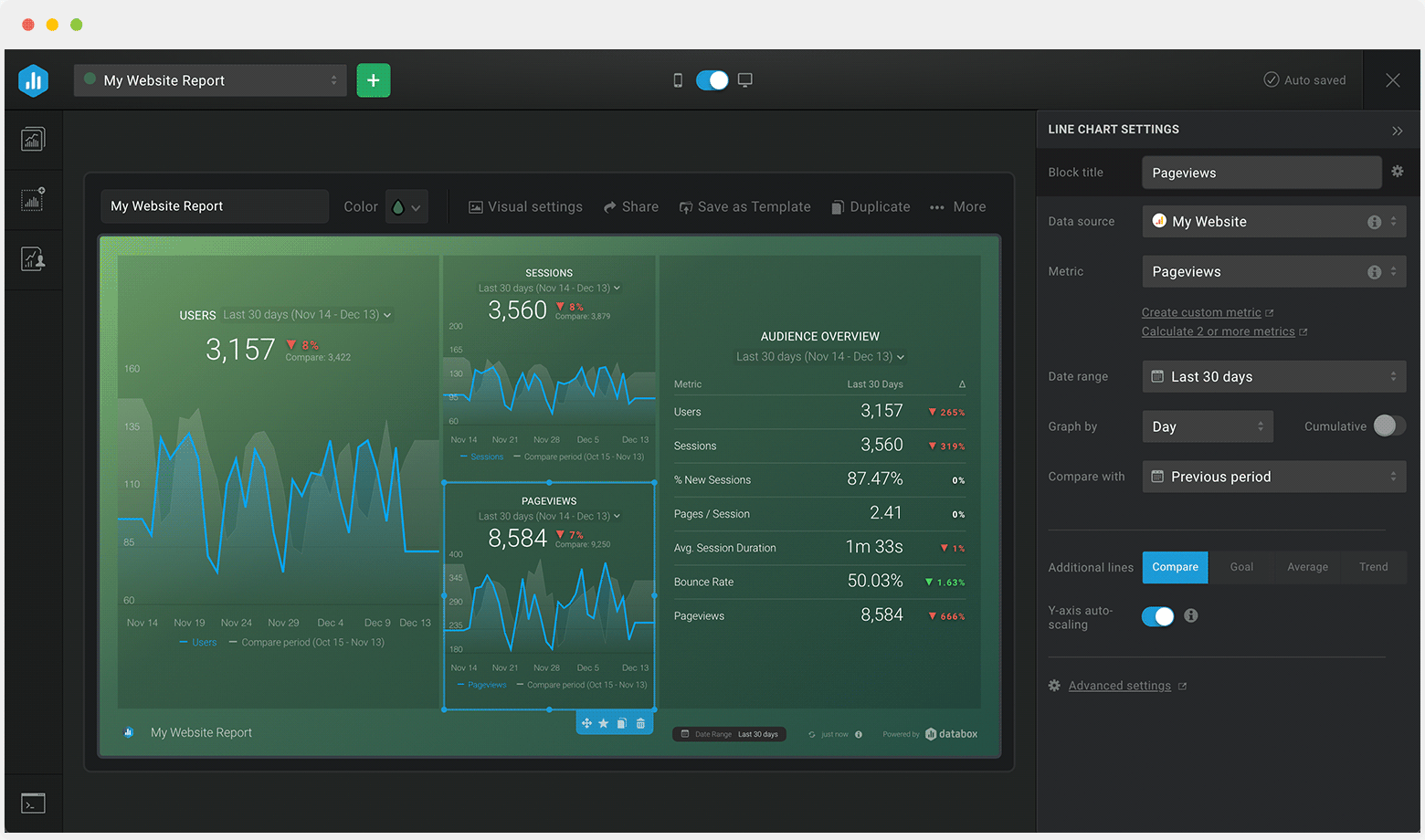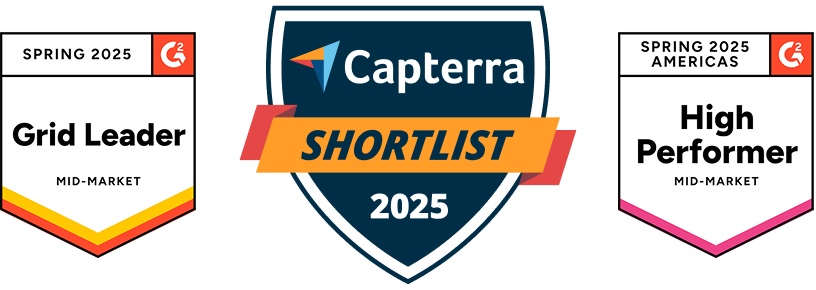What Is a Google AdSense Dashboard?
Google AdSense dashboard provides publishers with the ability to track, visualize, and monitor their most important metrics and KPIs. By tracking the data from the Google AdSense dashboard in real time they are able to manage their ad inventory, track their earnings, and optimize their ad revenue effectively.
What Should Be Included in a Google AdSense Dashboard?
A Google AdSense dashboard is a crucial tool for publishers to monitor and manage their ad performance, earnings, and account settings. This means that a Google AdSense dashboard should include metrics like earnings, clicks, number of views, CPC and more to help publishers determine what improvements need to be made to boost revenue.
